I have a large DF which is structured like this. It has multiple stocks in level 0 and Date is level 1. Starts monthly data at 12/31/2004 and continues to 12/31/2017 (not shown).
Date DAILY_RETURN
A 12/31/2004 NaN
1/31/2005 -8.26
2/28/2005 8.55
3/31/2005 -7.5
4/29/2005 -6.53
5/31/2005 15.71
6/30/2005 -4.12
7/29/2005 13.99
8/31/2005 22.56
9/30/2005 1.83
10/31/2005 -2.26
11/30/2005 11.4
12/30/2005 -6.65
1/31/2006 1.86
2/28/2006 6.16
3/31/2006 4.31
What I want to do is groupby the month and then count the number of POSITIVE returns in the daily_returns by month (ie 01, then 02, 03, etc from the Date part of the index). This code will give me the count but only by index level=0.
df3.groupby(level=0)['DAILY_RETURN'].agg(['count'])
There are other question out there, this one being the closest but I can not get the code to work. Can someone help out. Ultimately what I want to do is groupby stock and then month and FILTER all stocks that have at least 70% positive returns by month. I cant seem to figure out how to get the positive return from the dataframe either
